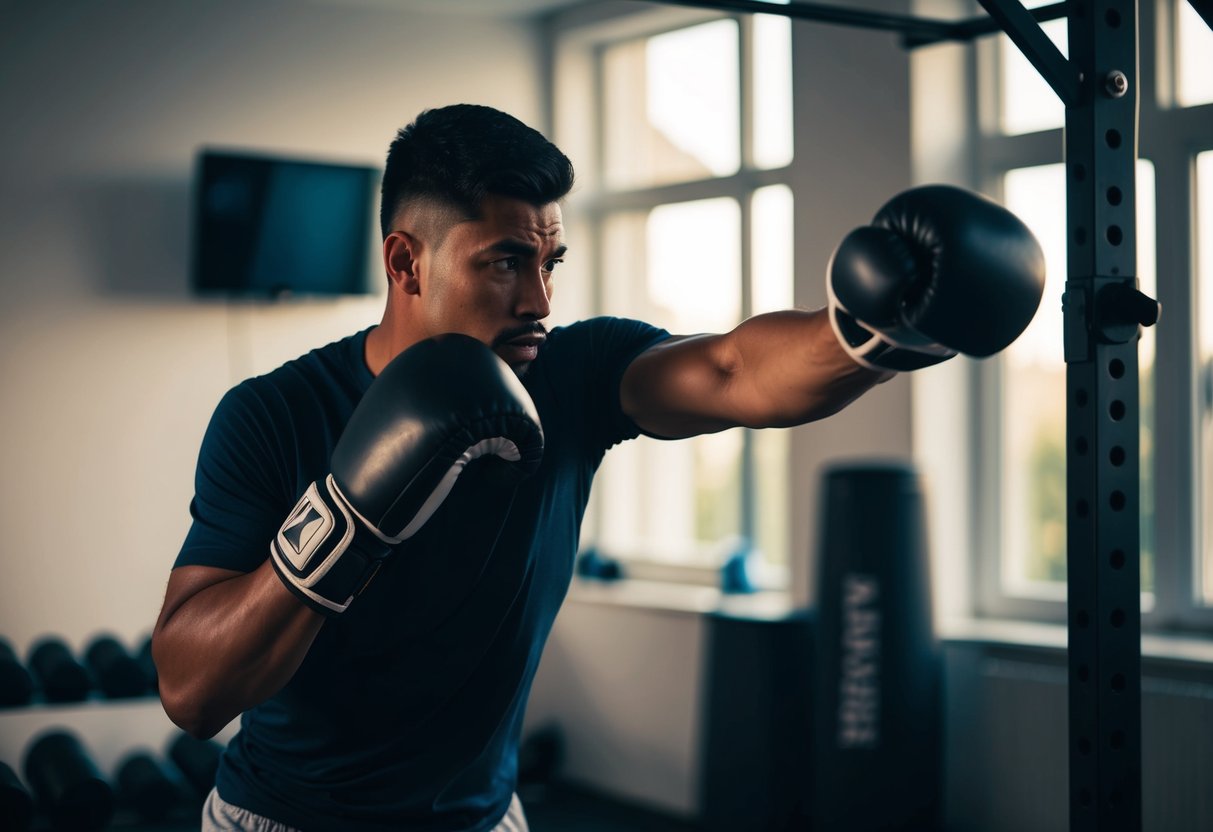Ultimate At-Home Boxing Workouts: Skills, Drills, and Combos for All Levels
Boxing is a fantastic way to enhance fitness and boost confidence right from the comfort of one’s home. With the right skills, drills, and combos, anyone, regardless of experience level, can enjoy the benefits of at-home boxing workouts. The key to a successful at-home boxing routine is a blend of structured exercises that improve strength, endurance, and technique.
These workouts cater to all levels, offering variations for beginners and challenges for seasoned boxers. Proper form and consistent practice are essential to maximize results and minimize the risk of injury. By integrating a variety of combinations and movements, participants can expect a comprehensive workout that challenges both the body and mind.
At-home boxing workouts are adaptable and efficient, making it easy to fit a powerful, full-body workout into even the busiest schedules. With minimal equipment, anyone can create an effective routine that molds skills, builds stamina, and refines coordination. Embarking on this journey promises a rewarding experience that not only enhances physical strength but also cultivates discipline and focus.
Getting Started with At-Home Boxing
Boxing at home begins with understanding the correct stance and having the right gear. These elements form the foundation for effective and safe workouts. With solid basics and necessary equipment, enthusiasts can enhance their training sessions.
Understanding the Boxing Stance
Maintaining the appropriate boxing stance is crucial for stability and power. A proper stance involves feet being shoulder-width apart, with the dominant foot slightly behind. The knees should be slightly bent to allow for easier movement. Both fists need to be up, with the elbows tucked close to the body to protect the ribcage. This stance promotes balance, making it easier to deliver punches and evade opponent moves.
Correct form helps in maximizing punch effectiveness while reducing the risk of injury. Practicing this stance at home can build muscle memory, essential for any level of boxing. Adjusting the body weight slightly forward aids in faster movements and quick reactions.
Essential Equipment for Home Boxing
To start boxing at home, having the right equipment is vital. Boxing gloves are necessary to protect the hands and provide the cushioning needed during punches. Wraps worn underneath gloves add extra wrist support and protection. For beginners, a basic punching bag can help in practicing different punches and combinations.
Jump ropes are excellent for cardiovascular endurance and warming up before the main workout. Hand weights may also be used to build punching power and increase overall strength. Having a dedicated workout space aids in maintaining focus and consistency. Investing in quality equipment enhances training effectiveness and safety, leading to improved skills over time.
Fundamentals of Punching Techniques

Mastering a solid punch requires understanding different techniques such as the jab, cross, hook, and uppercut. Each punch has unique mechanics, benefits, and applications, all important in forming effective combinations.
Mastering the Jab
The jab is a fundamental punch in boxing, offering speed and precision. It is delivered with the lead hand, aimed to keep opponents at a distance and to set up additional punches. The correct stance is crucial. Fighters should maintain a balanced position with knees slightly bent.
Engaging the shoulder, extend the lead arm while simultaneously rotating the fist so that the palm faces downward at impact. The wrist must remain straight to avoid injury, and the non-punching hand should protect the chin. Quick retraction is vital for defense, making it difficult for opponents to counterattack. Regular practice, such as shadow boxing and using speed bags, can enhance jab effectiveness.
Developing a Powerful Cross
The cross is delivered with the rear hand and is known for its power and effectiveness at midrange. Proper execution begins with a solid stance, weight distributed evenly with the rear heel slightly raised. As the punch is thrown, the hips should rotate forward, transferring body weight into the strike.
Simultaneously, the rear foot pivots for additional force. The cross should land with the first two knuckles, and a full extension of the arm ensures maximum reach and power. Keeping the non-punching hand up protects against counterattacks. Practicing the cross repeatedly on heavy bags or with focus pads can significantly improve form and strength.



